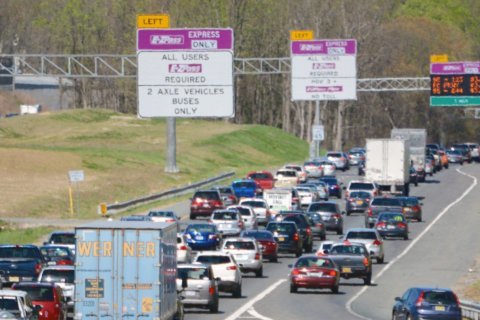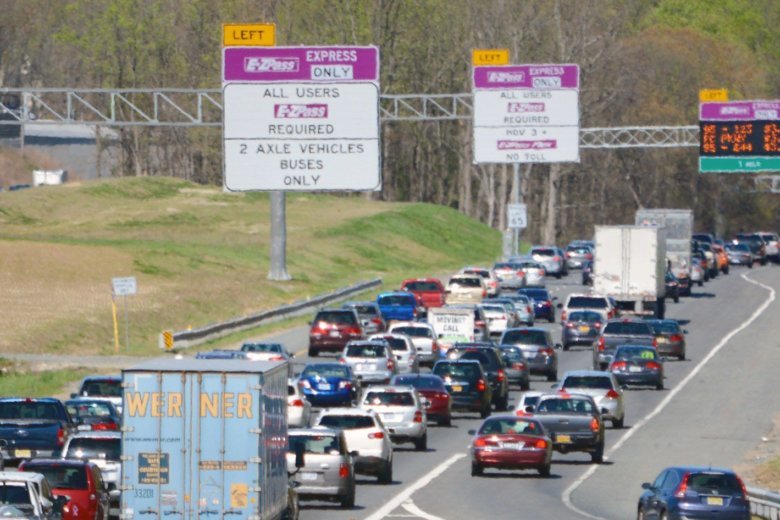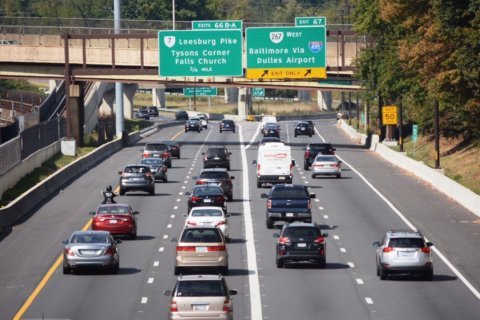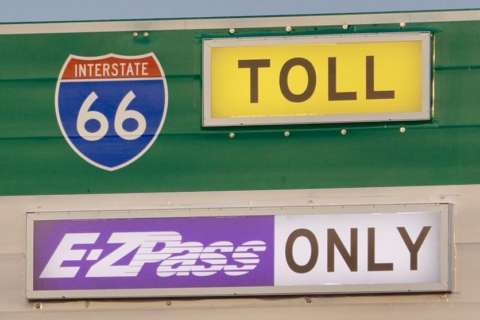
WASHINGTON — A group of powerful business leaders is calling for more toll lanes on highways from Richmond, Virginia, to Baltimore.
The first focus of the Greater Washington Partnership’s toll lane push is expected to be on Maryland’s plans for toll lanes around the Capital Beltway and up part of Interstate 270, with lobbying from the CEOs of some of the largest companies in Maryland, Virginia and the District to get the rules in Maryland to match those on Virginia’s Interstate 495 Express Lanes.
Virginia’s lanes are free with a minimum of three people in the car and an E-ZPass Flex, while other drivers pay a toll that rises and falls in relation to the amount of traffic in the lanes.
Having the same rules would allow for a seamless connection over the Potomac River.
A position paper to be released by the partnership Wednesday morning calls for the toll lanes to be built into a complete regional network the group believes could ease the traffic jams that waste time and money across the region every day.
Estimates of the annual cost of congestion per regional driver are as high as $1,834.
“We’re already paying for it. This is something that many people don’t recognize,” said Joe McAndrew, the Greater Washington Partnership’s director of transportation policy.
He largely praised Virginia’s tolling system on the existing lanes of I-66 inside the Capital Beltway that launched in December as being set up to change driving behavior.
It uses the toll revenue to provide more transportation options that may be helping to move more people through the corridor.
The I-95 Express Lanes construction agreement did not include significant funding for transit options or other improvements.
As for a larger network, Virginia is already extending the I-95 Express Lanes south to near Fredericksburg, converting I-395 HOV lanes to toll lanes and adding I-66 toll lanes outside the Beltway in projects that do include money for other road or transit improvements.
Maryland — in addition to plans for toll lanes on its portion of the Beltway and along I-270 — has toll lanes with different rules on a short stretch of I-95 north of downtown Baltimore.
“This is a once-every-20-year type opportunity for dealing with congestion issues that are only forecast to worsen,” said Jason Miller, CEO for the Greater Washington Partnership.
“This isn’t the silver-bullet solution for our transportation system, but our highway network is a really important piece of the overall system.”
The push from the business community is important, because groups like this were a key force behind this year’s approval of increased, dedicated funding for Metro for the first time in the system’s more-than-40-year history.
“These issues are front and center for leading employers,” Miller said. “It matters for their ability to attract and retain people and for them to be in a place where quality of life is consistent with what they hope all of their employees are able to experience. It doesn’t just matter directly for their employees — everyone wants to be in a place where economic opportunity is broadly shared.”
Asked why tolling existing lanes or adding new toll lanes are the suggested solution, rather than funding from the business community, Miller said the actual tolls are just one part of a well-executed toll lane project, because it could also encourage people to shift their commuting times to hours when tolls are lower or boost carpooling and transit use.
“I think this isn’t the only solution to our transportation system’s needs,” he said. “This isn’t just a pay-for; this is also about managing demand on the system. It’s also about providing revenues for public transportation and moving more people, not just moving more vehicles.”
The report to be issued Wednesday also briefly considers the possibility of a congestion-pricing zone like the one implemented in London that charges drivers who enter the most congested areas downtown.
The Greater Washington Partnership includes leaders of companies, including Dominion, Exelon, Washington Gas, Under Armour, Capital One, The Carlyle Group, EY and Northrop Grumman, as well as legal, educational and health care groups.
It was founded by Capitals and Wizards owner Ted Leonsis, Russ Ramsey of Ramsey Asset Management, and Peter Scher of JP Morgan Chase, and includes such board members as BET co-founder and Salamander Resorts CEO Sheila Johnson.
Among the group that specifically contributed to the report are a consultant who has worked with Metro, a former Virginia secretary of commerce and trade, and former U.S. Deputy Transportation Secretary John Porcari, who also served as Maryland transportation secretary.
Tolls are just one piece of the group’s larger transportation plan that is expected to be formally released later this year.
Over the next few months, the group plans to call for more unified regional trip planning and payment systems and for more bus system overhauls, like the one recently implemented in the Baltimore region and the one in the planning stages for Metrobuses in the D.C. area.
“We’re going to be pushing really hard on this,” Miller said.
Getting any toll lanes done in a way that maximizes benefits for the transportation network has not been easy though, McAndrew said.
“If you look at tolling projects around the country, they have had mixed results.”








